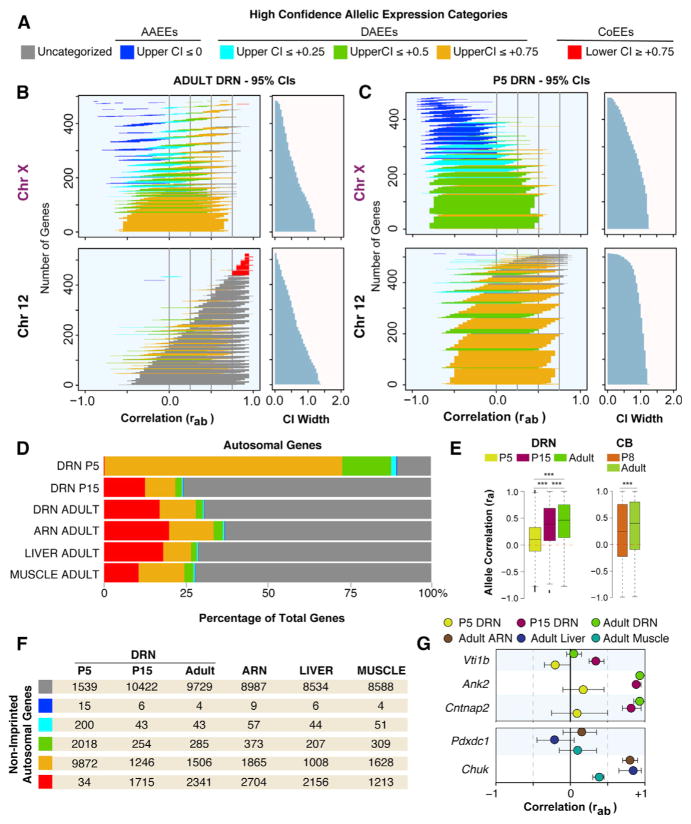Figure 2. In Vivo Screen for ASE Effects in the Mouse Brain at Different Ages and Across Different Adult Tissues Reveals Genes with AAEEs, DAEEs, and Allele CoEEs and an Enrichment for DAEEs in the Neonatal Brain.
(A) Criteria for categorizing genes according to AAEEs, DAEEs, and allele CoEEs; CI represents rab 95% confidence interval.
(B) Plots of the rab 95% CIs for all chromosome (chr)X and chr12 genes expressed in the adult female DRN reveal high-confidence AAEEs, subcategories of DAEEs, and high-confidence allele CoEEs. Gene CIs are colorized according to the appropriate category (A), and uncategorized genes are indicated in gray. The width of the CIs are presented in the right graph. Most X-linked genes have an upper-bounded 95% CI less than or equal to +0.75, indicating a threshold for ASE effects. Few autosomal genes achieve this strict threshold (see chr12 data).
(C) Plots of the rab 95% CIs for all chrX and chr12 genes expressed in the P5 female DRN reveal a substantial shift toward increased DAEEs among autosomal genes.
(D) The percentage of all expressed autosomal genes with different allelic effects in the P5, P15, and adult female DRN as well as in the adult female ARN, muscle, and liver. DAEEs are prevalent in the P5 DRN, and allele CoEEs are more prevalent in juvenile and adult tissues.
(E) Boxplots of the ra values for all autosomal genes analyzed in the P5, P15, and adult DRN and in the P8 and adult cerebellum (CB). A significant genome-wide developmental change in ASE effects occurs, involving increased DAEEs at P5 and P8 and increased allele co-expression at P15 and in adults. DRN, one-way ANOVA, and Tukey’s HSD post-test were used; CB, two-tailed t test. ***p < 0.001.
(F) Number of non-imprinted, autosomal genes in each allelic expression category (see A) for each age and tissue type.
(G) Examples of genes with DAEEs at all ages in the DRN (Vti1b) or age-specific DAEEs in the DRN (Ank2, Cntnap2); examples of genes that exhibit DAEEs across different tissue types (Pdxdc1) or in a tissue-specific manner (Chuk).

